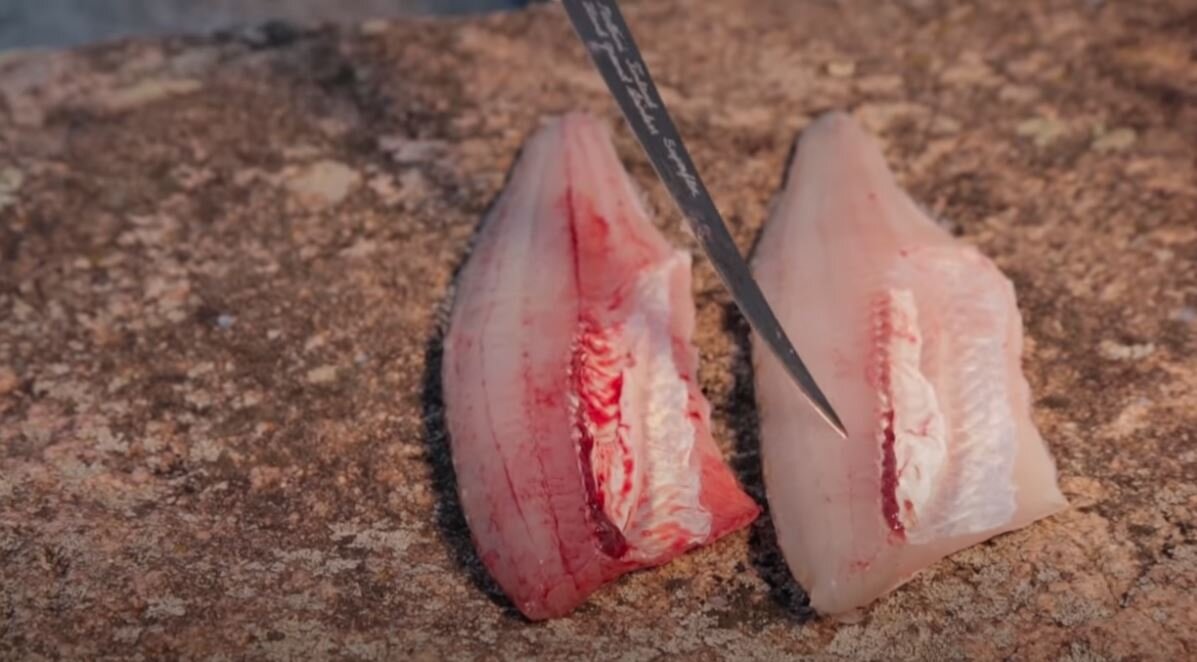It’s getting harder out there. Both to find fish and especially to catch them as we get deeper into winter. Most anglers have graduated from boot-traffic to wheeled transport of many kinds, which dramatically changes the winter fish-scape. Overhead noise and pressure can relocate fish, but it’s also important to note that pressure can take them directly from the lake. That’s why for mid-winter, you need a few more tricks up your sleeve to keep the bite going.
Community Hole Edges – It is inevitable that you’ll often be forced to fish in areas where other people are. Lots of folks know to fish the edges of the community spots, but you can be strategic about which edge based on ice traffic patterns. Usually, the access-side of a community hole sees the most on-ice traffic, so I will seek the back-side of a group. I’ll also be ready to relocate should a few groups be making constant noise or otherwise disturbing fish, especially in shallow water. For gills, I’d rather go shallower than the rest of the group to escape pressure, and in most instances for crappies I’d rather go deeper – all else being equal.
Fish Secondary Structure or Cover – Now is the time to find fish on less-than-fishy looking spots. That can be a sand-flat surrounded by mud bottom you side-imaged during the summer, or a secondary point at the base of a big main-lake one which is getting less attention. I also like fishing weeds during this time of the year, as you can find weeds in lots of places and don’t have to concentrate on only a few areas in the lake where people are colonizing.
Be Organized – Bite windows are the name of the game come mid-winter, with fish feeding at times in only 15-30 minute intervals. It’s imperative that you have multiple rods rigged, with different baits tied on and at the ready. Drop on the same fish with different baits until you find the winning combination. I like to have an attractor style spoon like a Forage minnow, then a horizontal presentation like the Forage Minnow Fry, to something that hangs a little more vertical, like the Tungsten Punch Fly. Have plastics and bait handy and at the ready and be ready to focus. If you break off, tangle, or otherwise can’t drop on the school, abandon that setup for another and fix the mess later.
Travel to Fish – Mid-winter is the perfect time to explore new bodies of water and hit trophy destinations. The bite can be challenging on famous lakes too but can be comparatively better than what’s going on in your backyard. Even if you strike out, I’m reminded that every trip like that makes you a better angler in the long run.
Use Your Camera More – Underwater viewing has changed the way we fish, perhaps more than any other technology to date. From the use of swivels and inline reels, to learning the importance of green weeds and fish behavior within them, owning and using one simply means learning more. On certain panfish bites, especially midwinter, using one can mean catching more fish. I can think of more than a few finicky perch and crappie bites where seeing the fish inhale the bait every so subtly, as the only way to convert hooksets. Of course, if fish seem camera shy or won’t approach, you can always just use the camera to learn more about the substrate, cover, and surrounding area.
Patience Can Be Your Best Play – In today’s world of Livescope, lightweight lithium augers, and enhanced outerwear, it’s easier and more comfortable than ever to go right to the fish and keep after them. During midwinter, while it always helps to be near fish, sometimes there’s no substitute for waiting them out and fishing quietly. That includes deadsticks for panfish and zero-jigging techniques, live-bait, and a steady approach to staying near fish without swiss-cheesing the lake and pushing them all around. Pick your spots, ensure there’s fish there, and fish silently through a feeding window to see if staying put might outproduce running around.
It's hard to emphasize this point enough, especially for bluegills. While crappies tend to tolerate pressure and fast fishing a bit better, big gills are a tough customer come midwinter. Last week I was on some shallow water fish who spooked when an ATV came within 50 yards. Bass swam through quickly during those scenarios as well. An underwater camera was crucial to have the patience to read these fish, jig quietly, and let them come to us. Had I been punching holes all over, it’s clear that at least for these fish on the lake I was fishing, all I would’ve been doing was herding them elsewhere.









